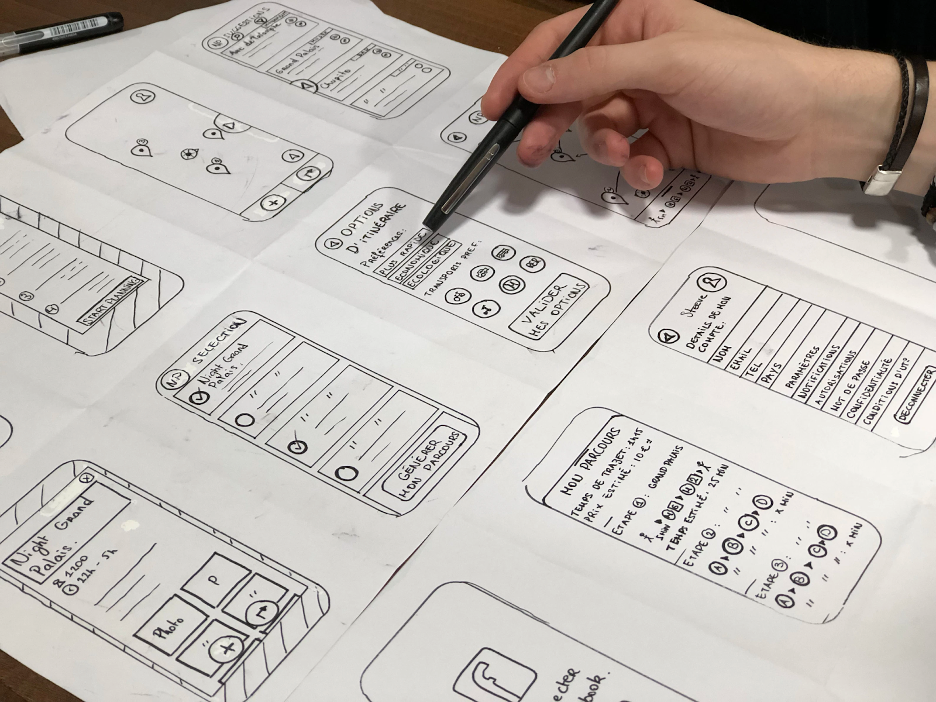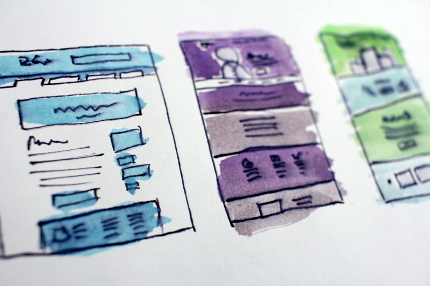
A Student’s Guide to a UX/UI Career
A Student’s Guide to a UX/UI Career
Within the exciting and ever-evolving world of design, there are two terms that are frequently used: User Experience (UX) and User Interface (UI) design. While they are closely related, they each focus on distinct aspects of the design process. No matter which kind of design you decide to focus in, a career in User Experience is bound to be full of creativity and opportunities for innovation.
A Student’s Guide to a UX/UI Career
One of the most exciting parts about a career in UX or UI is the collaborative process of working with others in various roles. As a UX Designer, for example, you will work collaboratively with the UI team to create a seamless and enjoyable experience for users. Given the collaborative nature of these roles, it is important to have a comprehensive understanding of the responsibilities associated with other roles in the team. In this blog, we'll explore the distinctions between UX and UI, offer insights into different career paths that you can pursue, and explain how you can become career-ready.
What is UX?
User Experience (UX) is the overall experience a person has while using a product or service. UX Design is all about enhancing a user’s interaction and satisfaction with a product. It’s a holistic approach to design that considers every part of the interaction between user and product. The process of creating an experience that is enjoyable and easy to use includes ensuring that every interaction, from the initial point of contact to the final user engagement, is thoughtfully crafted and optimized. For example, designing an efficient and pleasant experience for a website might include organizing the homepage so that information is easy to find.

What is UI?
User Interface (UI) is the point of contact between people and computers. UI Design specifically focuses on the aesthetic and interactive elements of digital products. While UX deals with the user's entire interaction with the product from beginning to end, including how they feel about the experience, UI centers around designing the product’s navigation elements, buttons, colors, icons, fonts, and all other visual elements. The goal of UI Design is to ensure that the visual elements of a website or app are visually pleasing and easy to use.

Careers in UX/UI
Jobs in UX and UI Design are exciting career paths that combine creativity with technical expertise. With a median pay of $80,700 a year, not only is this path lucrative, but jobs in digital design are in high demand with an expected growth of 16% by 2032.
1. UX Designer
When it comes to UX and UI, the job of a UX or UI Designer is probably the one you’ve come across most. UX Designers are tasked with designing an overall experience that is usable, enjoyable, and accessible. UX Designer responsibilities include building wireframes, which serve as a simplified draft of an app or website, and outlining the structural layout, information, and user flow before moving on to the more intricate design phases.
Along with critical thinking, communication, and technical skills, one of the most important qualities a UX Designer should have is empathy, as it enables them to understand and anticipate the needs, preferences, and emotions of users, fostering the creation of designs that truly resonate with and enhance the overall user experience. UX Designers must also have great problem solving skills, as a major part of their job is analyzing the user’s journey in order to find solutions to pain points.

2. UI Designer
It is the job of UI Designers to design the visual elements that make up the interface of an app, website, or device. Next time you visit a website, pay attention to the color scheme, layout, and overall visual presentation. While these visual details can sometimes be overlooked, for a UI Designer, designing these elements is more than just for aesthetic reasons. Creating designs must align with the companies’ brand identity and resonate with the target audience. UI Designers create an intuitive interface that seamlessly guides users to information with visual cues and interactive elements, ensuring a smooth and engaging user experience.
In addition to an interface that is visually appealing and intuitive, UI Designers must also make sure that the interface is accessible to all individuals, regardless of their ability, age, or background. For example, selecting high-contrast text against the background benefits users with visual impairments by enhancing readability.

3. UX/UI Developer
While UX Designers focus on creating an overall pleasant experience, UX/UI Developers implement the visual and functional elements of the digital product. UX Developers bridge the gap between technology and design, utilizing their eye for design to translate the designer’s vision into a user-friendly experience. UX Developers must be familiar with programming languages, such as HTML, CSS, and JavaScript, and a team player, as collaborating with various team members is a big part of the role. If you enjoy computer science and are a creative, outside the box thinker, then a job in UX Development may be a great fit for you.
There is much overlap between UX and UI Developer roles. UI Developers share the same responsibilities as UX Developers, but with a greater focus on implementing the visual aspects of the website.

Breaking into UX/UI
Embarking on a career in UX/UI design is an exciting journey that merges creativity, problem-solving, and a deep understanding of user needs. Whether you’re an incoming freshman deciding on your major or have already begun your path in UX, here are a few tips to help you succeed.
Academic background
UXers typically have a background in Computer Science or Digital Design. NJIT offers degrees in both of these areas, as well as Graduate certification with online flexibility for those who want to expand on their Bachelor’s degree. As a student at NJIT, you will have the invaluable opportunity to acquire industry-relevant skills guided and supported by seasoned professionals in the field.

Gain practical experience
Gaining experience is one of the best ways to boost your resume, apply your knowledge, and learn how to navigate real-world problems. As you continue your education, seek internships in UX/UI or graphic design and build your portfolio to showcase your best design work. Taking on work as a freelancer on sites such as Fiverr or Upwork, or volunteering at different organizations can also be a great way to gain experience.

Develop your hard and soft skills
In the technical and creative field of UX/UI, cultivating a combination of hard and soft skills is essential to your success. As a future UX/UI professional, you’ll want to hone your skills in industry-related software such as Figma, Adobe XD, and Sketch. Having a solid foundation of front-end development languages will also help you as a developer or in the collaboration process with other UXers. Additionally, developing your sense of empathy, and improving your communication and teamwork skills will benefit you greatly in any UX/UI specialization you choose.

Prepare for a career in UX/UI at NJIT
UX/UI is a dynamic and evolving field, promising an exciting career that seamlessly blends creativity with technical innovation. NJIT will prepare you for the continuously evolving technology field with specialized instruction, useful resources, and a plethora of opportunities. If you're thinking of becoming a UXer, apply to NJIT today!